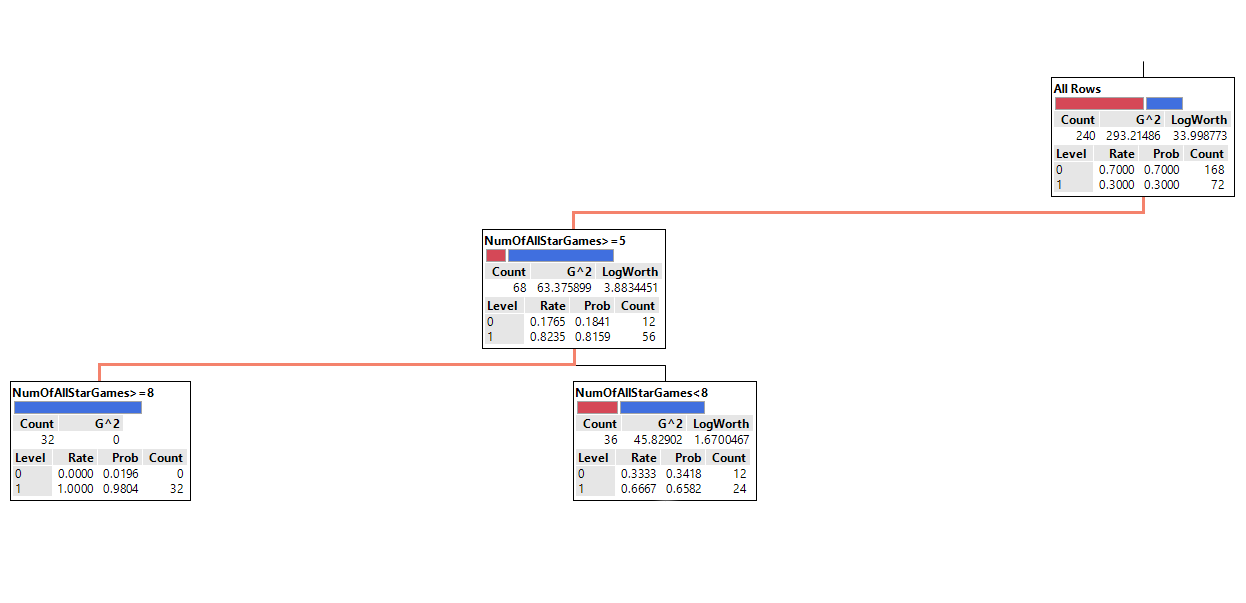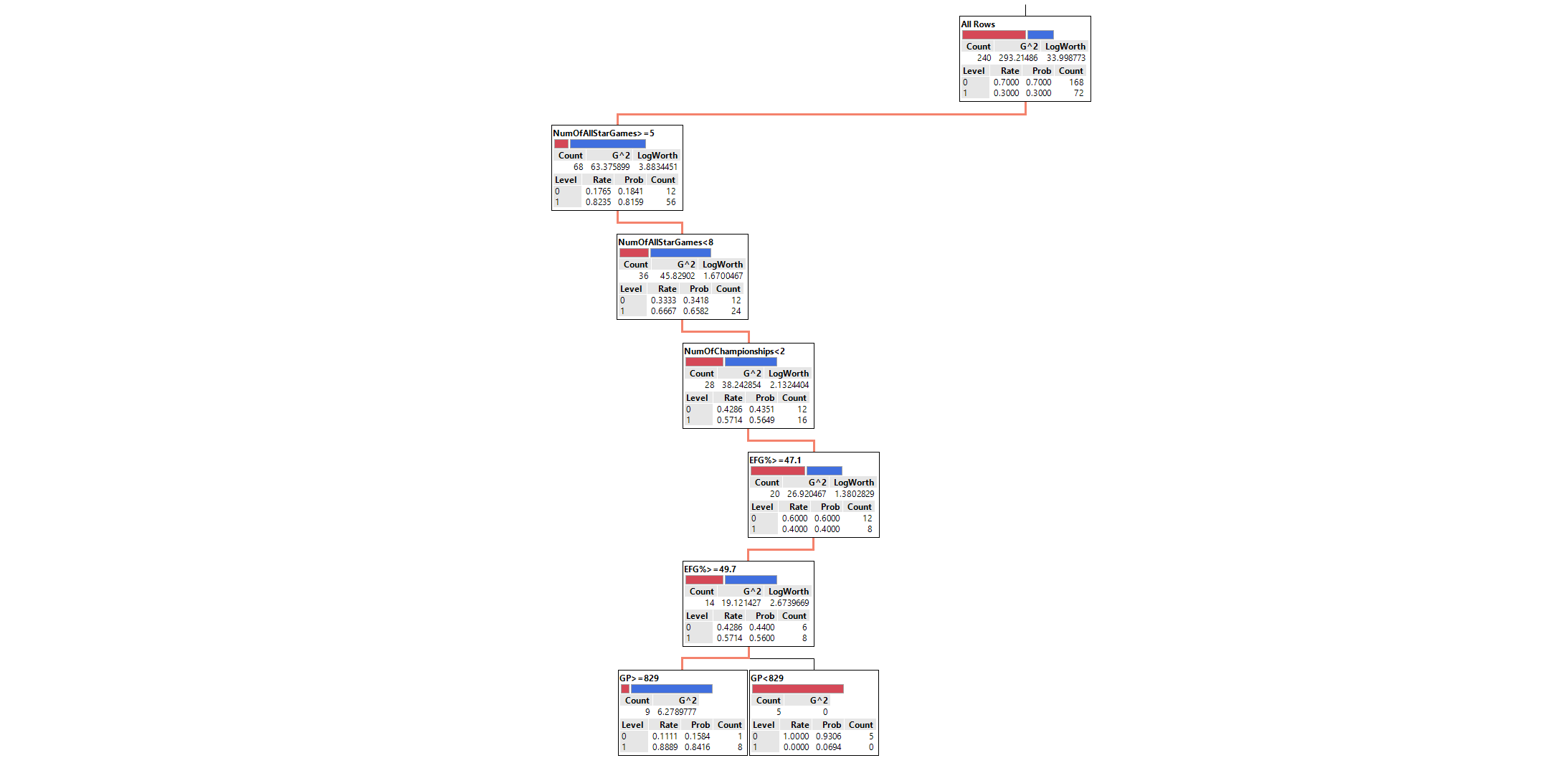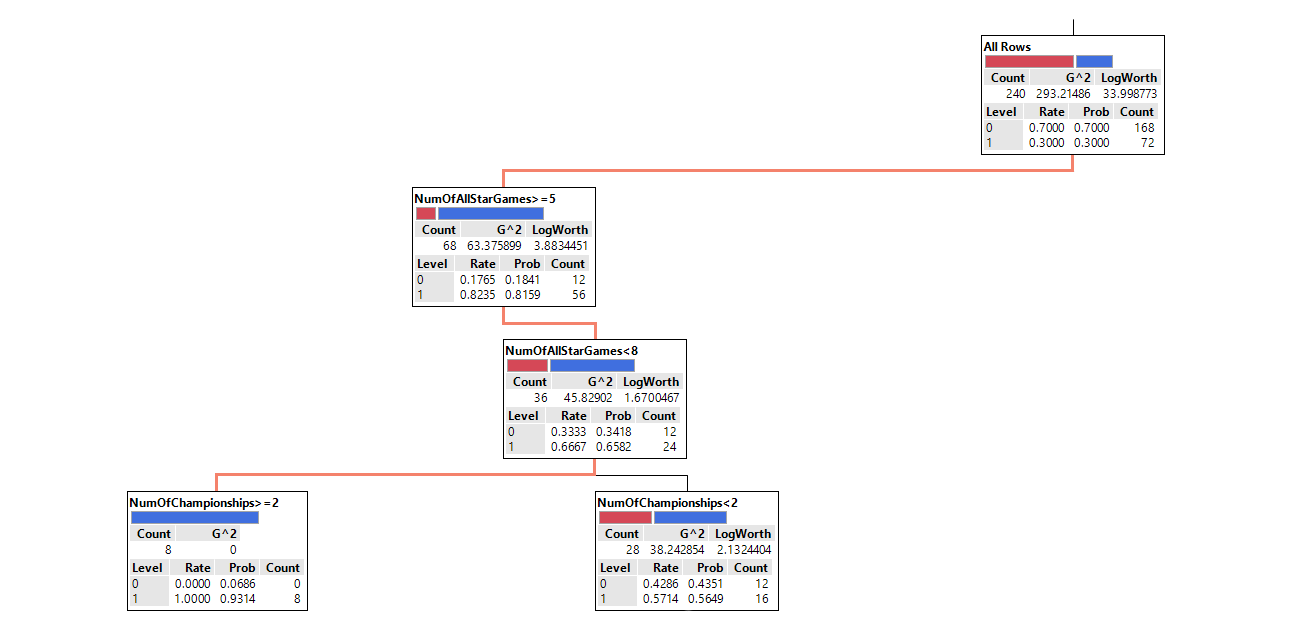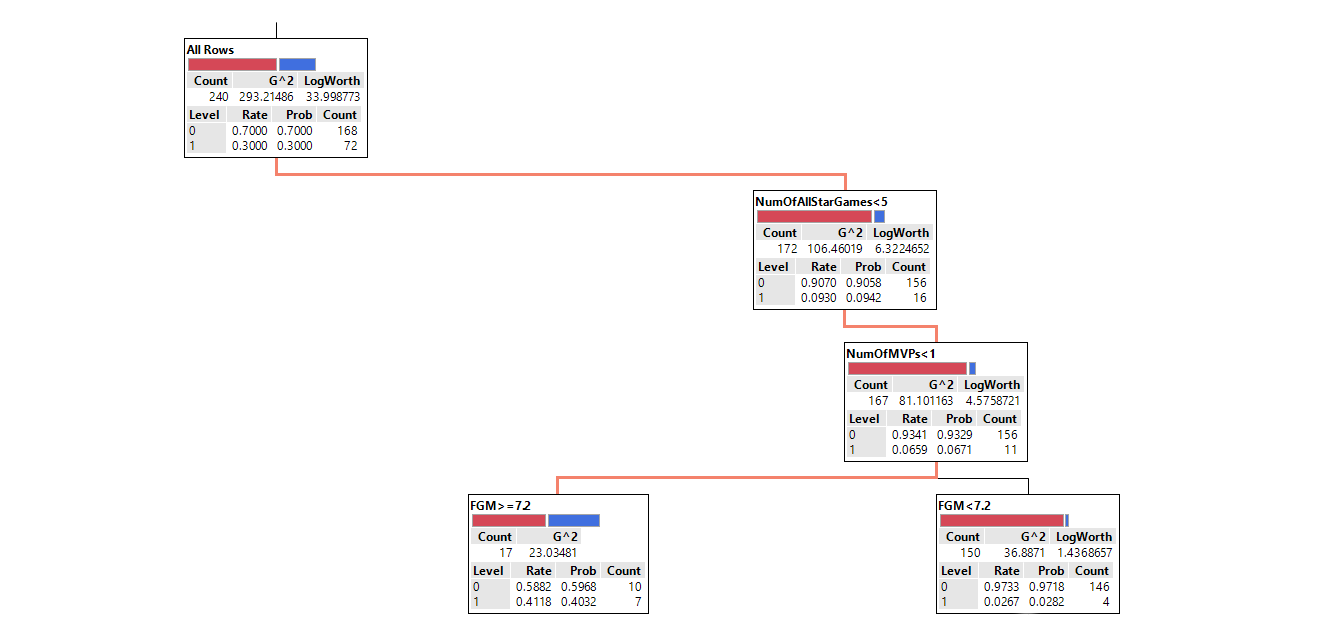Famely Tree: Hall of Fame Probabilities for Active NBA Players on the Bubble

Tracy McGrady stood in front of an elevator mirror in New Orleans last year during All-Star weekend talking to himself. The finalists for the James Naismith Memorial Hall of Fame induction of 2017 had just been announced, and his name was on the list. As told by McGrady during his induction speech, his wife CleRenda stood beside him. When the seven-time NBA All-Star didn’t really react once she asked if he was excited about being named a finalist, she commanded him to look himself in the mirror and tell himself he deserved to be in the Hall.
The man who once scored 13 points in 35 seconds stood there, struggling with whether he should be granted the highest honor in basketball.
“I had a zillion thoughts in my mind why I didn’t deserve to be here,” McGrady explained. “I started thinking of all these NBA greats who had accomplished so many great things. Then I began to compare myself to them. It was way too easy to focus on what you don’t have and what you didn’t accomplish. But I’m grateful for those people that saw in me and believed in me, maybe when I always didn’t believe in myself.”
So what exactly do you need to have accomplished in your career to make it to the James Naismith Memorial Hall of Fame?
This question isn’t an easy one to answer, as basketball’s most prestigious award is also one of the most ambiguous in all sports with its selection process. And while I’m all for trusting the process, I can’t help but be curious about what specifically makes an NBA player qualified for induction.
History does repeat itself, and while the anonymous committee’s decision-making isn’t an exact science, it has a method to the madness.
Introduction of Hall Anticipation Model (HAM)
In an attempt to get inside the head of the committee members and break down their evaluation methods, I compiled a data set of all 240 Hall of Fame-eligible NBA players since the 1973-74 season—when the league started recording steals and blocks—who have made it to at least one All-Star Game. This data set consists of all career per-game statistics, number of All-Star appearances, number of All-NBA selections, number of MVP awards, number of All-Defense selections and whether that player was in the Hall of Fame.
A predictive decision tree model breaking down this data set into 12 mutually exclusive groups based on their stats and accolades reveals several noteworthy patterns that voters have followed. For example, one of the groups in the decision tree shows that all 32 players with greater than eight All-Star appearances have made it to the Hall of Fame. Based on the subset that an individual player belongs to, the model also gives a probability of him being inducted.
We’re going to call this the Hall Anticipation Model (HAM, for short), and here’s the full decision tree (click to expand):
Using HAM, I will channel the mystery members from the selection committee and analyze the Hall of Fame chances for the following active NBA players who aren’t guaranteed immortalization in Springfield, Massachusetts: Dwight Howard, Derrick Rose, Joe Johnson and longtime backcourt running mates Tony Parker and Manu Ginobili.
Dwight Howard
To be honest, the idea for developing HAM and trying to find a more objective way to evaluate Hall of Fame credentials started with Dwight Howard, who is among the most controversial players in the league. Last month, Dime Magazine’s Oliver Maroney asked several top NBA experts in the media for their opinions on Howard’s chances, and, not surprisingly, disagreements popped up. A guy who was once the closest thing to Superman since Shaquille O’Neal and the most likable player around has now become a supervillain and one of the most polarizing figures in NBA history.
But the choice should be easy. Howard has a 98 percent chance of achieving basketball’s greatest recognition, according to HAM. As his athleticism fades with age and the game evolves around him, coupled with the drama that surrounded him in both Los Angeles and Houston, people forget just how consistently dominant Howard was for a long stretch of his career.
As mentioned earlier, all 32 players with at least eight All-Star appearances have made it into the Hall of Fame. Howard has made exactly eight All-Star games, all in a row from 2007 to 2014. Combine this with three Defensive Player of the Year awards, five All-NBA First Team selections, six consecutive rebounding titles, an NBA Finals appearance and an Olympic gold medal, and he should be viewed as a lock by the selection committee. Here is the path mapping Howard’s place in the decision tree:
Hall of Fame Verdict: No-brainer induction.
Derrick Rose
Derrick Rose isn’t even 30 years old yet, so it feels strange to already be discussing his Hall of Fame chances. But repeated injuries and plunging production have led people to shut the door on the possibility of his return to the league’s elite. Some are (probably) already thinking of titles for ESPN’s future 30 for 30 about what Rose could have been if not for injuries.
Still, Rose’s MVP award from 2010-11 works in favor of his Hall of Fame argument. At just 22 years old, he became the youngest ever to win the Maurice Podoloff Trophy, leading his Chicago Bulls to a 60-win season. Every player to win an NBA MVP award has made it to the Hall of Fame, so HAM looks favorably on Rose for that reason, predicting an 88 percent chance at induction.
But numbers sometimes don’t tell the full story, and history doesn’t always repeat itself. Upon further examination of the data, only five players have made it to fewer than five All-Star games and won an MVP, like Rose. Four of them earned MVP honors prior to the ABA-NBA merger, and the fifth was Bill Walton. And that last name is similar to Rose in a lot of ways. Both players were No. 1 draft picks who dealt with numerous injuries, but Walton did win two championships—snagging a Finals MVP in one—and had an illustrious college career that included two National Championships and three National College Player of the Year awards at UCLA.
Maybe Rose one day finds himself playing and possibly contributing on a championship team. That would make this a tighter decision. But based on his current resume and circumstances, it would seem his below decision path artificially inflates his chances:
Hall of Fame Verdict: No, but that potential 30 for 30 special has to count for something, right?
Joe Johnson
Has there ever been a more average star player in the league than Joe Johnson?
I know many of you are probably wondering why Johnson is even included in this discussion. But, based on the selection committee’s tendencies in the past, he appears to have a substantial shot at making it into the Hall. He has been selected to seven All-Star tilts, profiles as one of the most anecdotally clutch players and has been an extremely consistent scorer throughout his career.
According to HAM, Johnson has an 84 percent chance of earning induction. He falls into a group of nine players who have made between five and eight All-Star appearances, have won fewer than two championships and have an effective field-goal percentage of 49.7 or better in at least 829 career games. The only one to not make it into the Hall of Fame within this group is former Phoenix Suns star Walter Davis, who played from 1977 to 1992. But he’s a special case, having failed the league’s drug policy twice while battling cocaine addiction—one violation short of a lifetime ban. Although he did make amends with the league and the Suns, who have retired his jersey, his off-court follies could have played a significant role in his selection appeal.
So do I think Johnson will make it into the Hall of Fame? I can’t say so with certainty, but based on the model, it does look like he has a ridiculously good chance.
Hall of Fame Verdict: Yes! Johnson will finally prove to be more than just your average Joe.
Tony Parker and Manu Ginobili
Playing for a team led by one of the best coaches and power forwards of all time in Gregg Popovich and Tim Duncan, respectively, can make for complicated legacies. Tony Parker and Manu Ginobili know what I’m talking about. Hardline skeptics might just see them as exceptional role players in a winning system. But it shouldn’t be that way. The Parker-Ginobili backcourt was a staple to the San Antonio Spurs’ protracted success over the previous decade-and-a-half.
So let’s not beat around the bush here: Both players should absolutely be inducted into the Hall of Fame.
Parker has been the primary floor general through four championships and racked up plenty of individual accolades along the way. The French point guard was named to four All-NBA teams and appeared in six All-Star contests. He has also put up consistently strong numbers, averaging about 16 points and six assists per game on an eFG% of 51 percent. HAM gives him a 93 percent chance of making it to Springfield:
Ginobili, obviously, has amassed the same team honors as his backcourt partner in crime. But the individual recognition and overall statistics were never as accessible for him while spending much of his career in sixth-man capacity off the bench. The Argentina native made just two All-Star cameos and had half as many All-NBA appearances. He also didn’t make his NBA debut until he was 25, whereas his counterpart started for the Spurs as a 19-year-old.
HAM gives Ginobili just over a 40 percent chance of being inducted into the Hall of Fame for those exact reasons. But it doesn’t take into account a vital part of his legacy, which sets him apart from the field: international success. He was a star before his NBA career, winning the EuroLeague championship in 2001 and two Italian League MVP awards in 2001 and 2002. And then he has his 2004 Summer Olympics Gold medal, after Argentina finished ahead of a USA squad that included Allen Iverson, LeBron James, Carmelo Anthony, Dwyane Wade and Ginobili’s NBA teammate, Tim Duncan:
Hall of Fame Verdict: Absolutely. Parker and Ginobili have played a huge part in shaping one of the most consistently excellent teams in basketball history.
Follow Faizan on Twitter @Faizan_Has.
Follow NBA Math on Twitter @NBA_Math, Facebook, Instagram and YouTube.
Unless otherwise indicated, all stats are from NBA Math, Basketball Reference or NBA.com and are accurate heading into games on Nov. 22.






